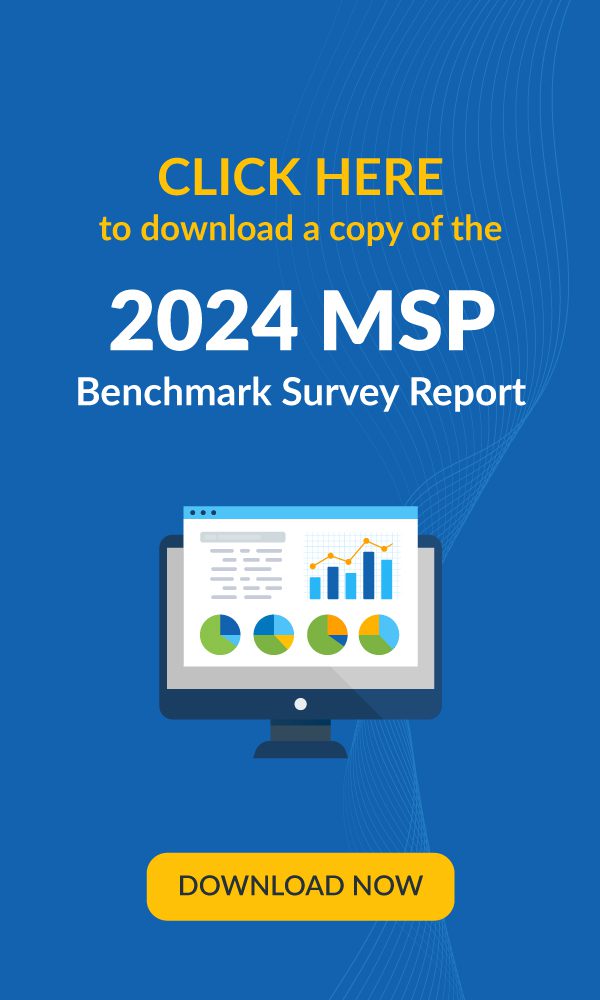A hacker’s goal is to identify weaknesses or vulnerabilities in an organization’s IT infrastructure that they can then exploit for nefarious purposes. They are especially interested in software vulnerabilities that can be easily exploited to seize control of a company’s network. Once bad actors gain access to an organization’s computer network, they can damage the business by blocking access, encrypting systems and data to demand a ransom, or surreptitiously stealing crucial information that can fetch them a tidy sum on the dark web.
Software vulnerabilities arise due to many reasons like security misconfiguration, programming errors, insufficient logging and monitoring, or simply human error. Vendors regularly release patches to address these vulnerabilities in an effort to thwart potential cyberattacks. The presence of zero-day vulnerabilities is one of the most common causes of successful cyberattacks and finding one allows hackers to have a field day.
What Is a Zero-Day Vulnerability?
A zero-day vulnerability is a flaw in a network or software that hasn’t been patched or for which a patch isn’t available. The software or device vendor may or may not be aware of this flaw. After that flaw is out there in the open, it poses a greater risk for cyberattacks to organizations using the software or device. Since Google’s Project Zero was founded in July 2014, it has compiled data on “in the wild” zero-day exploits, with 2021 being the biggest year on record. Google collects data for publicly known cases of zero-day exploits as part of Project Zero.
Why Is It Called Zero-Day?
Software vulnerabilities pose serious cybersecurity risks. That’s why it’s important to identify and fix them as quickly as possible. Nevertheless, sometimes it can take days, or even months, for software developers or users to detect a vulnerability. In contrast, if a hacker identifies it before a good Samaritan does, the software vendor has zero days to fix it. Hence the term zero-day vulnerability. Zero-day can also be spelled 0-day.
Fun Fact: The term “zero-day” has a fascinating origin story that has to do with digital content piracy. Previously, if hackers could rip off and distribute a movie or music album before or on the same day it went on sale legally, it was called a “zero-day.”
How Are Zero-Day Vulnerabilities Discovered?
Every software company invests a considerable amount of time and resources into detecting and fixing vulnerabilities in their products. While it may seem simple, identifying and patching vulnerabilities is no easy task. Coding is a complex project that requires a team of skilled programmers with the right tools and resources for it to be done efficiently.
In order to detect security vulnerabilities in software and networks, companies use a tool called a software vulnerability scanner. However, vulnerability scanners are capable of more than just scanning software for new flaws. Those tools also take an inventory of all IT assets, such as servers, desktops, virtual machines, operating systems, applications and active ports, on each machine to scan them for security flaws. As soon as a vulnerability is identified, companies immediately release a patch to fix it.
Software vulnerabilities can sometimes be identified by software users or cybersecurity experts and communicated to the software company concerned. Google, for instance, will reward and recognize individuals who inform them of security flaws. These rewards are often called “bug bounties” and can run into tens of thousands of dollars.
Even if a piece of software has many flaws, it might be hard to spot them all. The real concern for companies when it comes to zero-day vulnerabilities is who spots them and what the finder does with that information. If a hacker strikes first, then it can spell disaster for companies using that software.
How Are Zero-Day Vulnerabilities Exploited?
Zero-day vulnerabilities open companies up to a variety of security issues. An attacker who discovers this vulnerability can exploit it via any number of attack vectors, adversely impacting programs, data, computers or a network. Vulnerabilities are exploited to penetrate a target’s systems and steal data, information or money. Sometimes hackers use a zero-day vulnerability to install malicious software, like ransomware, that enables them to manipulate IT infrastructure remotely to spy on an organization’s activities or to disrupt operations.
A corollary of zero-day vulnerabilities is the zero-day exploit. A zero-day exploit is coding in a piece of software, like a series of commands, that can be used to leverage a zero-day vulnerability. When a hacker discovers a zero-day exploit, they can create an exploit package to be used immediately or in the future, or even choose to sell information about the vulnerability and exploit to the highest bidder on the dark web.
It is not uncommon for security researchers to use exploits to demonstrate the risk associated with a vulnerability and how it can be taken advantage of by cybercriminals for their schemes. A cybersecurity researcher uses exploits to strengthen security measures and typically informs the software maker of the flaw, enabling them to fix it before bad actors can exploit it.
An exploit may not be discovered by software vendors for months or even years if a cybercriminal discovers it first. Vulnerabilities are considered zero-day exploits until the software provider learns about them and begins working on a fix.
How Does a Zero-Day Exploit Differ From a Typical Exploit?
Like any exploit, a zero-day exploit can be used to damage an organization’s security, infiltrate their IT environment, undermine the integrity of web pages or disrupt the availability of software through distributed denial-of-service (DDoS) attacks. A zero-day exploit is a complete shock and isespecially dangerous because the vendor is not aware of it. That means they cannot warn users of the potential vulnerability as they create a patch that addresses the issue, as is the normal course of action with exploits.
An exploit kit is a plug-and-play cybercrime resource that is designed to take advantage of vulnerabilities in widely used software such as Adobe Flash, Java and Microsoft Silverlight. Various tools are included in these kits, such as plug-ins and a management console, that make it easier to launch a cyberattack or spread malware.
A typical exploit is one that has been discovered and publicized, either by the vendor or other industry experts. In a standard exploit scenario, the software vendor is developing or has released a patch to render it ineffective. Therefore, applying security patches regularly and promptly is critical to preventing cybersecurity breaches. There are times when known vulnerabilities are exploited as a result of developers delaying patching them.
On the other hand, a zero-day exploit kit includes tools and features designed to target an unknown vulnerability. Hackers can either buy or create exploit kits and store them on compromised websites or advertisements that, when clicked, will install malware on the victim’s computer.
Unsuspecting victims can suffer attacks from exploit kits through phishing scams by visiting malicious websites or downloading suspicious files that haven’t been scanned for viruses. Exploit kit manufacturers can base their entire businesses on selling those kits as part of the cybercrime-as-a-service economy and earn good money for their work.
What Is the Most Famous Zero-Day Exploit?
At the top of the charts is EternalBlue, the most damaging exploit in history. Originally developed by NASA as a cyberattack tool, it was stolen and leaked by the Shadow Brokers hacking group in March 2017. Officially known as MS17-010, the EternalBlue targets any system using the SMBv1 (Server Message Block version 1) file-sharing protocol. It is responsible for some of the most popular cyberattacks, including WannaCry and NotPetya.
Stuxnet is another well-known cybersecurity horror story that made the front page. Discovered in 2010, this strain of malware caused significant damage to major targets, including Iran’s nuclear facilities, and gained infamy for its hardware crippling capabilities. The Stuxnet worm was spread through Microsoft Windows computers and could be carried on USB drives as well.
What Is Meant by a Zero-Day Attack?
Zero-day vulnerabilities can come in a variety of formats including missing data encryption, broken algorithms, URL redirects, password security flaws and simple bugs. A zero-day attack occurs when a hacker identifies any of these vulnerabilities, writes an exploit code and successfully deploys the code, also known as malware, to gain unauthorized access to a computer system or network. The infection can take the form of a virus, Trojan horse, worm, spyware, adware, rootkit or other malware like ransomware.
In the cybersecurity community, a zero-day attack is often a hot topic of debate between two schools of thought. According to one group, a zero-day attack is one that exploits a vulnerability that hasn’t yet been discovered, while the other group refers to it as an attack that exploits a vulnerability the day it becomes public but before a patch is released.
In any case, a zero-day attack is a cyberattack that has the capability of crippling the network of an organization and causing major financial and reputational damage. Hence, it’s crucial for companies to take into account zero-day attacks when designing their security infrastructure and writing security policies.
Why Are Zero-Day Attacks So Dangerous?
As cyberattacks make media headlines, businesses are becoming more and more concerned about more than just the damage to their company and their reputation. Companies also have to be concerned about the potential damage that cybercriminals can do to their partners and clients. By using the initially breached organization’s IT infrastructure or data, cybercriminals can try to find a back door into the IT environment of one of the victim’s clients or partners, known as a third-party or supply chain attack. This is a growing tactic, and criminals are targeting businesses of all sizes and industries, including small and medium-sized businesses (SMBs) that tend to have a basic cybersecurity system that is easier to break through in order to land the big fish.
Threat actors behind advanced persistent threats (APT), often nation-state or nation-state aligned hackers, are quick to use zero-day attacks to carry out stealthy operations that can go undetected for a prolonged period, allowing them to stealthily spy, spread malware or steal information. As nation-state cybercrime grows more common, every business is at risk from APT threat actors who are more than happy to exploit supply chain vulnerabilities, like a zero-day flaw or unpatched software, to do the dirty work that enables them to strike at government and infrastructure targets.
Cyberattacks exploiting zero-day vulnerabilities are particularly dangerous because the odds are set in favor of the very people from whom protection is needed. Any attack that exploits a zero-day vulnerability can be costly for a business, resulting in consequences like revenue loss, ransomware recovery, lost productivity, data theft, system downtime, reputation damage and regulatory actions.
Is There Any Defense Against Zero-Day Attacks?
It can be difficult to identify zero-day attacks, especially if they are executed stealthily. Unless the attackers intend to attract public attention, it is often too late for the victims to mitigate it by the time a zero-day attack is detected. Even the best antivirus and antimalware tools sometimes fail to detect a zero-day attack because they don’t have the signature to identify the malware in use. However, AI-powered tools are much more likely to spot zero-day threats. By collecting their own threat intelligence, AI solutions adjust protection more quickly because they don’t rely on threat reports to detect the vulnerabilities that create opportunities for zero-day attacks.
When it comes to protecting against zero-day attacks, an ounce of prevention is worth a pound of cure. Patching regularly, running routine security checks and training employees to be vigilant against common attack vectors are some of the factors that can go a long way towards preventing zero-day attacks. Choosing AI-enabled security solutions can also provide crucial protection against zero-day attacks through early detection and enhanced cyber resilience. Research by IBM shows that automated security catches an estimated 40% more threats than conventional security, including zero-day exploits.
Even if your security tools do not detect any suspicious activity, there are some tell-tale signs that can indicate a potential zero-day attack such as frequent system crashes, slow hardware and software performance, unauthorized changes in system settings, lost storage space and obvious credential misuse.
Here are a few tips to keep your IT environment safe against zero-day cyberattacks.
Implement Network Access Point and Endpoint Control: Use a network access tool to ensure that only authorized machines can access the company’s network in concert with a secure identity and access management solution that keeps out unauthorized users. Additionally, segment the network in such a way that the infected part can be contained and isolated from the rest in case of a breach. Single sign-on for user accounts provides IT teams with the ability to quickly quarantine and remove permissions from a user account that may be compromised. it also makes it easy to ensure that employees can only access the systems and data they need to perform their job.
Use an Advanced or Automated Email Security Solution: Despite the enormous amount of information on phishing emails, social engineering, spoofing and the sophistication of today’s phishing messages make detecting them a serious challenge. That’s a huge problem because 90% of incidents that end in a data breach start with a phishing email. With a cutting-edge email security solution, your business will be in a better position to spot and stop dangerous messages inside and outside your network as well as scan them for viruses. Using an email security solution with strong antiphishing capability helps ensure that employees have minimal exposure to threats like a virus-infected email and also reduces the risk of anyone falling for a phishing scam.
Phishing is costing organizations $14.8 million in 2021, with lost productivity a significant component of the annual cost.
Regularly Back Up Your Data: It is essential for every business to build cyber resilience by putting business recovery and data backup procedures in place as a mitigation against the damage caused by cybercrime. Booming dark web data markets ensure high profitability for cybercriminals who traffic in it, especially Personally Identifiable Information (PII). It is even worse when cybercriminals encrypt a company’s data while demanding a ransom that can run into millions. Quality backup solutions are crucial to enabling companies to get back to business quickly as they begin recovery from a cyberattack. According to an ITIC report, server downtime can cost up to $1,670 per server, per minute, for an hourly outage cost of $100,000.
Fight Back With Modern Zero-Trust Security Tools: Using new generation security tools that embrace zero-trust security principles makes a tremendous impact on a company’s cyber resilience, including its ability to resist zero-day attacks. At the core of zero-trust security is the adoption of a secure identity and access management solution companywide that includes multifactor authentication (MFA). By requiring authentication for every user on every login, IAM solutions create important barriers to intrusion through user accounts. MFA alone can prevent 99% of password-based cyberattacks. Using other access control tools, like next-generation or cloud-hosted firewall (NGFW), can make that advantage even bigger. By configuring it to allow only necessary transactions by authenticated users, you can ensure maximum protection.
Choose a Good Host Intrusion Protection System (HIPS): Monitoring software like HIPS helps detect suspicious activities on host endpoints. Since it analyzes the behavior of code, the tool is better at detecting new malware that might escape traditional antivirus solutions. If an attacker is attempting to work undetected in your network, HIPS is better designed to detect it than an antivirus/antimalware solution.
Make Building a Strong Security Culture a Top Priority: Making sure that employees have the tools and knowledge at their disposal to spot and stop cyberattacks by building a strong security culture goes a long way towards preventing zero-day attacks from landing. Security awareness training is an important way to accomplish this because when employees understand threats, everyone feels like they’re part of the security team. That fosters good security hygiene and enables employees to spot cyberattacks including zero-day threats. Phishing messages are common vectors for zero-day threats; Google disclosed that 68% of the phishing messages that it stops are zero-day attacks. Browsers are also popular channels for hackers to trick people into downloading malware. Avoid opening suspicious websites or clicking on dubious links. Your system could be infected with malware, which may compromise your company’s network.
Be Vigilant About Patching and Suspected Intrusions: Ensuring that applications, software and operating systems are patched regularly, ideally immediately upon release of a patch, is vital to stopping cyberattacks from zero-day exploits. Patches are the way that developers fix those problems. Zero-day attacks can be difficult to directly uncover, but there are sometimes warning signs that can point you in the right direction. Any unknown user logins or suspicious account activity is suspect. Be on the lookout for odd behavior in your systems or applications like crashes, lockouts or unexpected changes. Perform regular penetration tests to determine the security of your environment. By identifying and fixing vulnerabilities before hackers, you can avoid potential attacks.
What Is a Zero-Day Patch?
A zero-day patch is a term used to describe a specific or special patch to address zero-day vulnerabilities. It is imperative to deploy these patches immediately to close vulnerabilities and render potential avenues of attack ineffective in order to thwart a cyberattack.
Stay Vigilant Against Zero-Day Threats With Kaseya
With Kaseya VSA, you can centrally manage Windows, macOS platforms and third-party application software vulnerabilities with fully automated patch management. This scalable, secure and highly configurable policy-driven approach is location-independent and bandwidth-friendly.
Besides reviewing and overriding patches, VSA lets you view patch history and automate the deployment and installation of software and patches for both on- and off-network devices. Furthermore, the tool ensures that all machines stay in compliance with patching policies.
Kaseya VSA is a convenient remote monitoring and management (RMM), endpoint management and network monitoring solution that gives your company all the tools it needs to stay secure and successful. Get a free demo to find out how VSA can address the unique security challenges of your company.




